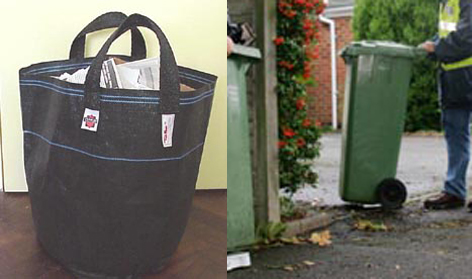Crawley Borough Council

Cheers bag to collect paper waste
Crawley Borough is located in the county of West Sussex. Since the late 1980s, recyclable materials have been collected using bring banks which resulted in a recycling rate of 13% by 2001. In order to increase its recycling rate the council introduced the CHEERS scheme (Crawley Households Easily Enhance their Recycling Scheme) in March 2001.
Waste analysis had shown that mixed paper represented 30% of the waste stream making it a desirable fraction to collect. A polypropylene woven bag was used to collect paper from 8,000 households on a fortnightly basis.
WERG was involved in monitoring 2,500 households on four different rounds over the initial eight weeks of the scheme. Set out and participation rates were recorded and key observations noted. The highest participation rate in an area was 75% and the lowest 51%. Participation in the scheme had reduced in all areas by the second four week period of monitoring. This might be due to awareness being at its highest when a scheme is first introduced with household interest declining over time. Whilst some households liked the bag some complained that it got damp and there were problems with the bags blowing away.
Crawley Borough Council then introduced the Red Box scheme to the majority of households in the Borough in 2002. Emphasis was placed on education and promotion with the Wombles playing an integral part of the awareness scheme.
The council was subsequently awarded a National Recycling award for its promotion. In 2005 the Council moved to a wheeled bin multi-material collection and WERG were involved with helping to promote the scheme and monitoring levels of recycling. Over 3,000 households were visited and recycling activity monitored. Results show that participation is very high with 92% of households participating during the sampling period. Crawley currently recycles 28% of its waste


